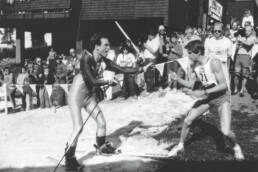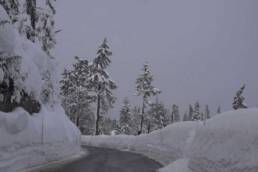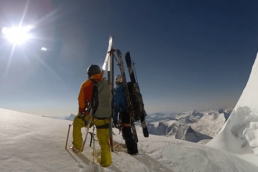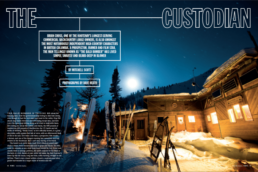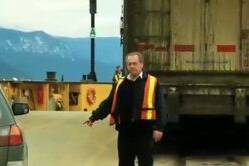Competitors from across town — and across the world — ski, bike, paddle and pant their way through a Washington state race that follows in the footsteps of its pioneers and is under the watch of 900 volunteers. By Jann Eberharter.
From the summit of Mount Baker in Whatcom County, Washington, the Pacific Ocean looks surprisingly far away. It’s only 48 kilometres (30 miles) as the crow flies, but the terrain is heinous. It’s not exactly beckoning for a race, but each year, participants of the team-relay race Sea to Ski break the route down into stages, each stage featuring a classic northwest sport. But back in 1911, a few souls tried to run it—well, sort of.
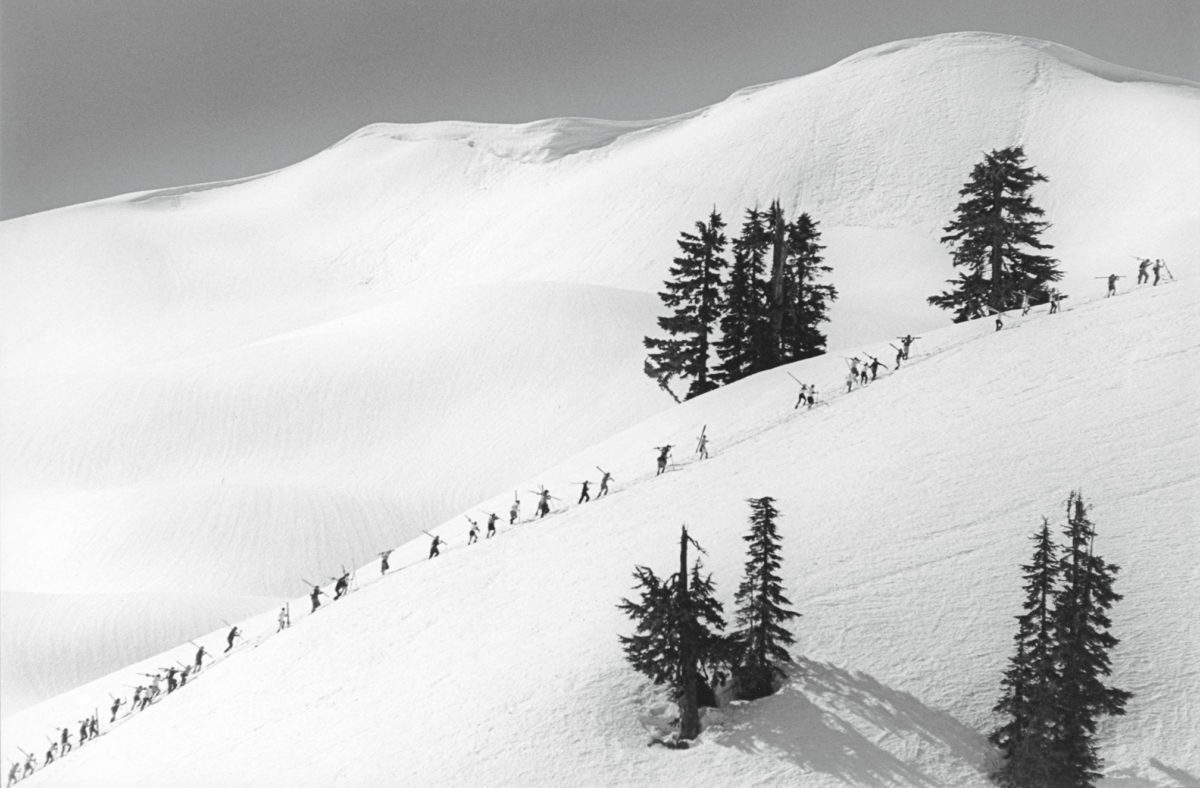
The Mount Baker Club was looking to boost economic activity in Bellingham, Washington, and they decided running from Bellingham to the summit of Mount Baker might stimulate interest in the area. They figured few people would race, but many would come to watch. Fourteen people were adventurous enough to sign up for the first Mount Baker Marathon that year.
Unlike most marathons, participants chose between taking a train to Glacier, Washington, 70 kilometres (44 miles) east on Highway 542, or an automobile to Heisler’s Ranch outside of Deming, Washington, 40 kilometres (26 miles) away. From their drop-off points, racers would summit the 3,286-metre (10,780-foot) mountain before turning around and running back down to Bellingham. Beyond individual prowess, the race was also seen as a contest between train and car, the former a reputable form of transportation and the latter an emerging one.
Debuting in 1973, the team relay race from Mt. Baker Ski Area to Bellingham Bay now includes sports in seven stages: cross-country ski, downhill ski or snowboard, running, road biking, canoe, bike, and sea kayak.
With only a few hiccups in the first and second years, the marathon met its maker in 1913. Mount Baker, while only the fifth-highest peak in the Cascade Range, is not an easy mountain, and its elevation, glacial hazards, and remoteness pose challenges. With the limited communication of the era, judges on the mountain attempted to postpone the race that year but were unable to connect with organizers in town, so it proceeded anyway. As the day went on, officials were missing from their posts, multiple racers got lost, and one fell into a 12-metre crevasse, where he waited for five hours before being rescued. Not wanting to push their luck any further, organizers decided that would be the last marathon.
It’s no stretch to say the short-sightedness of the Mount Baker Marathon, though understandable, was its downfall. While the race proved that something epic was possible, it didn’t capitalize on all that Cascadia had to offer. The event got the race’s start and finish right—few places have such renowned mountains so close to the ocean—but eventually others saw that the possibilities between the two go far beyond running.
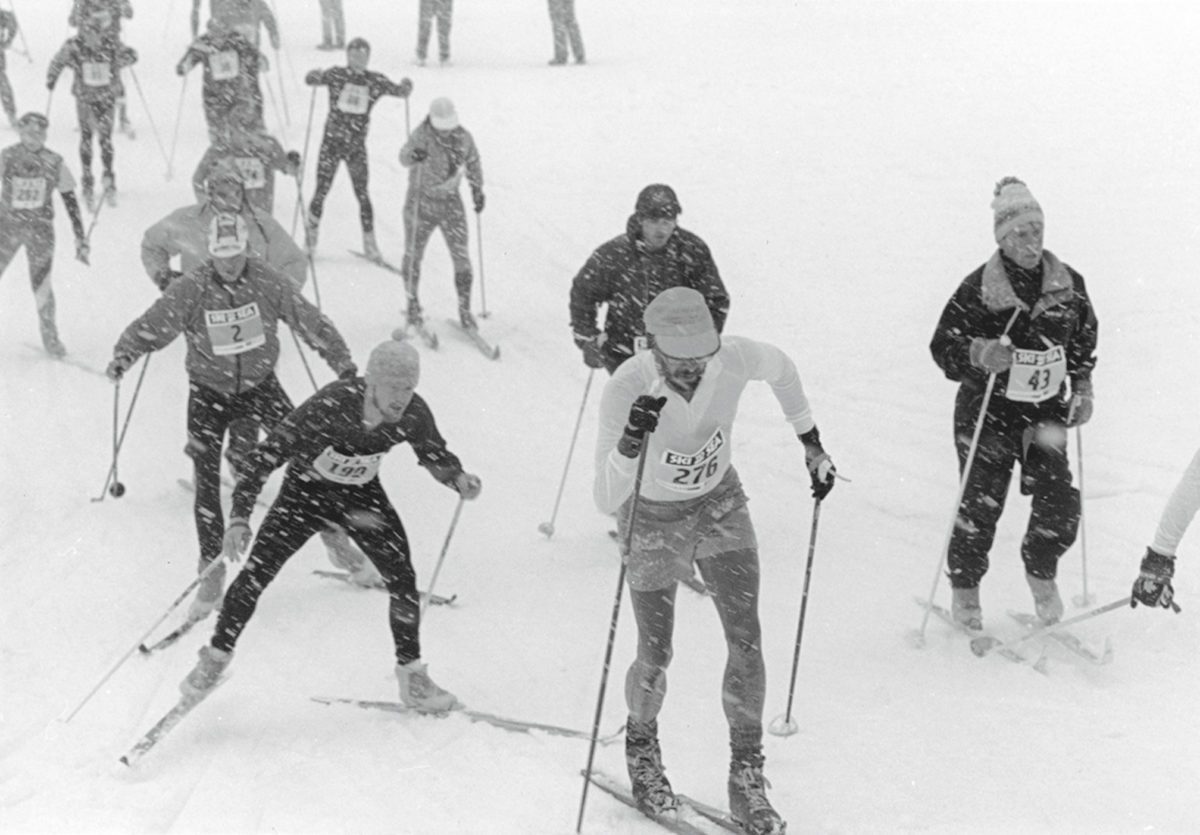
This is where the current Ski to Sea comes in. Debuting in 1973, the team relay race from Mt. Baker Ski Area to Bellingham Bay now includes sports in seven stages: cross-country ski, downhill ski or snowboard, running, road biking, canoe, bike, and sea kayak. Despite the race’s transformation and extension from its original form, the spirit has stayed true. “Ski to Sea embodies so much more than just the race,” says Anna Rankin, race director at Whatcom Events. “It’s always been about the camaraderie and the team spirit and the community and everyone gathering. That line ‘It takes a village’ has never been more apropos than with Ski to Sea.”
The event has 900 volunteers that keep race weekend running smoothly (well, as smoothly as possible), and coordination and planning are a year-round task for Rankin and the Whatcom Events crew. When Memorial Day weekend rolls around, Bellingham is flooded with racers from around the world, and sea kayaks top nearly every other car.
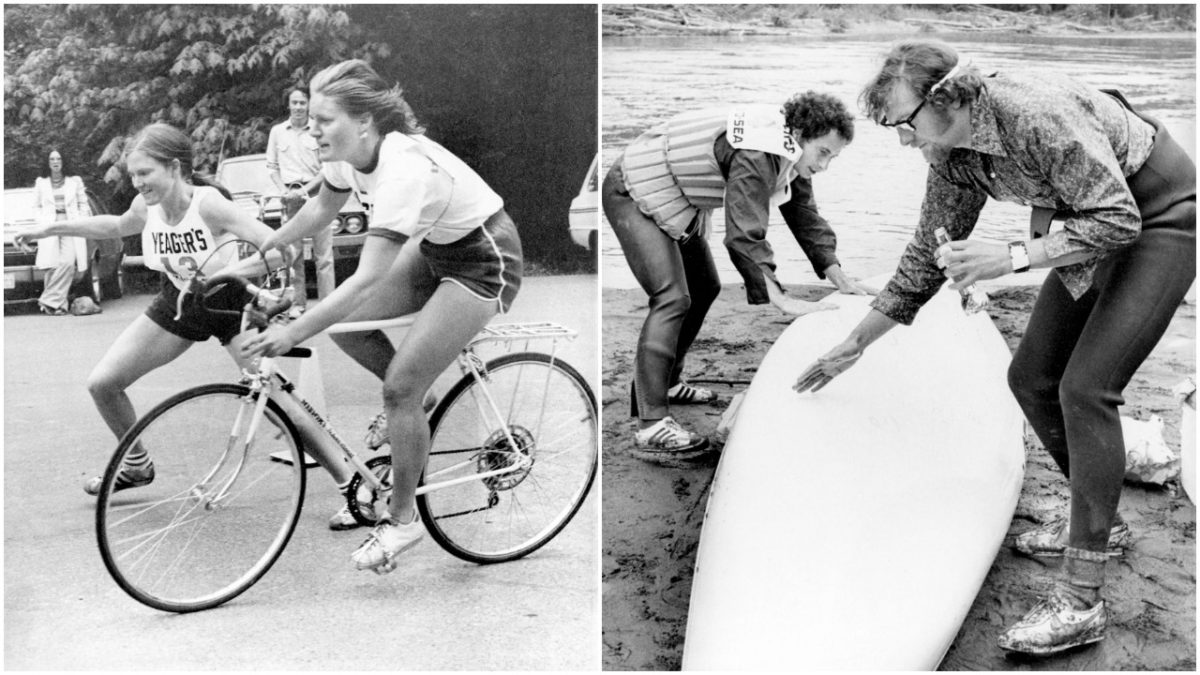
For those who come to experience this little slice of Pacific Northwest glory, the event puts all of the region’s natural wonders on display, and, just like in 1911, it proves love of adventure is one of the area’s defining attributes. But even more importantly, the race is a celebration of just how good we have it in the Pacific Northwest.
This year’s race will happen Sunday, May 26th and you can find the route topo here and race registration details at skitosea.com.
Related Stories
History of Ski Aerial Acrobatics
One of the most influential ski films of all time. Dick Barrymores documents what started freestyle skiing. From 1969…
Mount Baker Road Gap…to Face
Thank god for Pacific Northwest snow pack. Side note: Please, for the love of everything that is good in the world,…
Ski Your Ass Off
Winter is upon us. But as we look to the future, it's not a bad idea to drift back into the past. The glorious, super…
Powder Highway Ski Bum at SWS
Chris Tatsuno has done an amazing job chronicling his Ultimate Ski Bum Powder Highway winnings. In this episode he…


